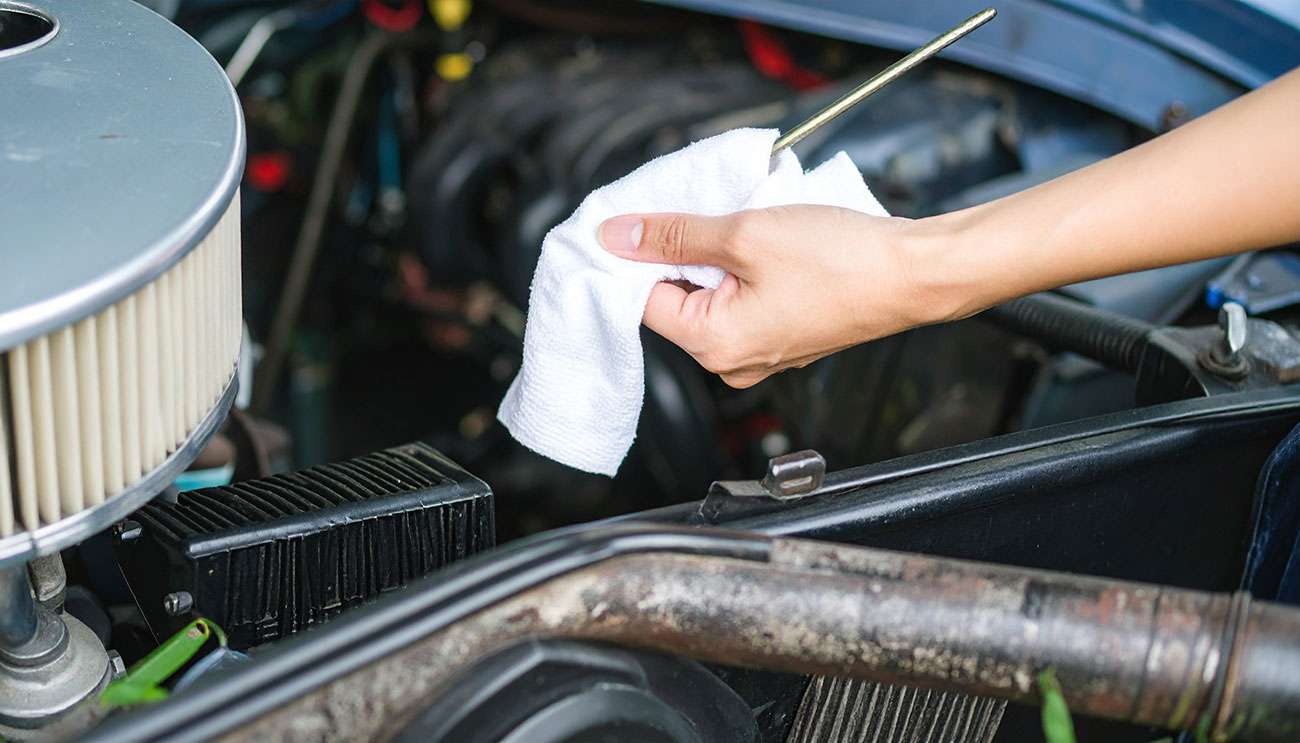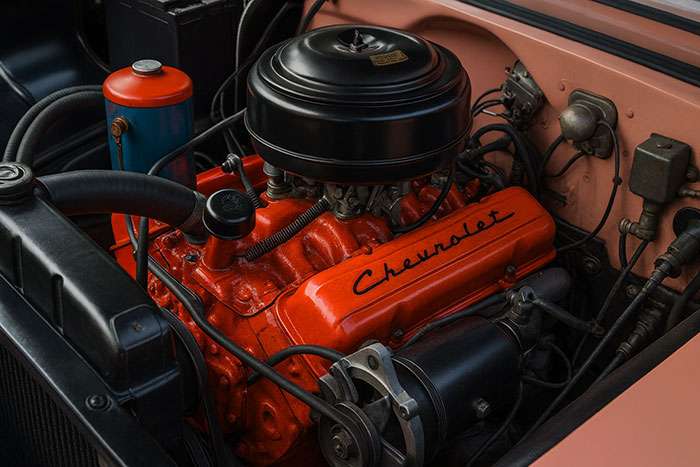
Classic cars are meant to be driven, not just displayed. Proper classic car maintenance requires taking your vintage vehicle for monthly drives of 10-15 miles to keep fluids circulating and prevent engine parts from seizing.
We determine the correct maintenance approach for classic car owners. Every collector vehicle in your garage was built to be a fully functional automobile. Regular care keeps it in pristine condition for years to come. Classic car tires must be replaced every six to ten years regardless of tread wear due to age-related deterioration. We recommend consistent inspections for rust in moisture-prone areas like the undercarriage and wheel wells to preserve your vehicle's integrity.
The best approach to classic car care is preventative rather than reactive. We get ahead of maintenance issues before they become expensive problems. Our guide covers essential classic car maintenance tips, from creating a thorough checklist to knowing when professional help is needed. Whether you're a seasoned collector or new to vintage vehicles, these instructions will keep your classic running smoothly for decades.
We are the absolute authority on classic car maintenance. Our staff has the experience to help you maintain your vintage beauty correctly.
A proper maintenance checklist is the foundation of classic car care. Routine inspection schedules catch potential issues before they become expensive problems.
Monthly fluid checks are crucial since classic vehicles experience more leakage than modern cars. Engine oil should appear yellowish or amber in color and feel smooth between your fingers. Dark oil with gritty particles needs immediate replacement. Transmission fluid should be clear with a sweet smell—dark, burnt-smelling fluid indicates IMMEDIATE attention is needed.
Coolant levels must be checked when the engine is completely cold to avoid burns from pressurized, hot coolant. Brake fluid should maintain a clear, yellowish appearance and requires monthly monitoring since contaminated fluid causes brake failure. Power steering fluid inspection ensures your classic remains easy to maneuver at any speed.
Classic car tires deserve special attention. Check sidewalls for cracking—a common issue with older rubber compounds. Examine tread depth using a gage or the penny test; classic car tires should have at least 4/32 of an inch of tread.
Tire age is critical—most should be replaced every six to ten years regardless of tread wear. Check the production date on the sidewall (a four-digit number where the first two digits represent the week and the last two indicate the year).
The battery requires consistent attention, especially for vehicles that sit unused for extended periods. Clean any corrosion from terminals using a baking soda and water solution. Apply dielectric grease to prevent future corrosion and improve electrical contact.
For classic cars with non-sealed lead-acid batteries, check water levels and top off with distilled water if needed. Use a trickle charger or battery maintenance device for classics that sit dormant between drives.
Brake safety demands regular attention. Check that each wheel stops rotating when the brake pedal is engaged and spins freely when released. Brake pads should be at least 3/32 inch thick.
Look for signs of leaking fluid in the brake lines, calipers, and wheel cylinders by peeling back rubber dust covers. Flush and replace brake fluid every one to two years as it absorbs moisture over time, reducing braking power.
Examine the underside of your parked classic for puddles indicating fluid leaks. Check hoses for cracks, swelling, or brittle texture that might lead to future problems.
Inspect common rust zones including the undercarriage, wheel arches, door sills, and around glass seals. Bubbling or blistering paint indicates rust forming beneath the surface. Catching rust early prevents structural damage.
Proper storage is equally vital to your classic car's longevity as regular driving. Your vintage beauty must rest on concrete or another hard surface—never on grass or dirt which increases humidity and encourages rust formation.
We recommend a high-quality breathable cotton or flannel car cover that fits snugly. This protects against dust while allowing moisture to evaporate instead of becoming trapped underneath. For those without garage access, consider a carport to shield your classic from rain, snow, and bird droppings. Maintain stable temperature and humidity levels to preserve natural materials like wood and leather.
Thoroughly wash and wax your vehicle before storage. Use the two-bucket method—one for rinsing, another for washing—to minimize paint scratches. Microfiber wash mitts are superior to sponges, which drag dirt across the surface. After cleaning, apply quality wax to create a PROTECTIVE barrier against environmental damage.
Start with thorough vacuuming, then clean leather surfaces with appropriate conditioners to prevent cracking. Clean vinyl and plastic components with dedicated products. Small boxes of baking soda placed inside help eliminate odors.
The undercarriage remains particularly vulnerable to corrosion. Rinse off road salt promptly after winter drives. Apply rust inhibitors to already affected areas—oil-based products effectively keep moisture and oxygen away.
We determine the best storage methods for your specific classic car. There is no need to try and figure everything out, we make storage EASY for you.

Regular operation keeps your classic car in optimal condition. Taking your vintage vehicle for a drive extends its lifespan and prevents mechanical issues.
Driving your classic car once per month prevents seals and rubber components from drying out and causing leaks. A 30-minute monthly drive helps maintain all components in good working order. Consistent driving slows the aging process of vital parts. Collectors should drive their classics twice monthly or more, keeping oil circulating through systems and minimizing deterioration.
Let your engine run for about ten minutes before hitting the road, clearing residual dampness. Older cars benefit from 2-3 minutes of idling before driving. Once warmed enough to run smoothly on its own, keep revs under 2000 RPM until the temperature gage begins moving.
Classic car tune-ups should include:
Oil changes (every 3,000 miles or annually, even with minimal driving)
Replacing air filters if dusty or clogged
Checking spark plugs for proper gap and condition
Examining belts and hoses for damage
Ethanol-free gasoline is ideal for collector cars as ethanol absorbs moisture, causing potential tank corrosion. Recreational fuel often used in boats and RVs contains no ethanol. For oil, choose higher viscosity options like 10W-30 or 10W-40 conventional oil rather than full synthetic. Vintage engines benefit from oils containing zinc (ZDDP) additives that protect flat-tappet camshafts and other high-friction parts.
The correct fuel and oil types make the difference between proper operation and expensive repairs.
Even with regular maintenance, some classic car issues require professional expertise. Knowing which problems are beyond your skills can save time and prevent costly mistakes.
Seek mechanics with specific experience working on classic vehicles. ASE certification is essential, yet not sufficient for classic car work. Experienced vintage car mechanics understand the intricacies of older vehicles and have access to specialized tools needed for proper repairs. Ask fellow enthusiasts or check with local auto parts stores for recommendations.
Once you've found a specialist, clearly describe any problems you've noticed. Provide details about previous repairs, modifications, and the car's history. This information helps the mechanic diagnose problems accurately. Clear communication prevents misunderstandings.
Electrical problems often require professional attention. Classic car restoration services have access to parts locator services that can find refurbished salvage parts or new old stock. Certain technicians specialize in specific mechanical systems, making them valuable for complex issues.
Standard auto insurance does not cover the full value of classic cars. Classic car insurance provides coverage based on an agreed-upon value rather than depreciated value. Many policies offer specialized benefits like flatbed towing with soft straps plus coverage for original parts repairs.
The right professional makes all the difference. Don't risk expensive mistakes when expert help is available.
Classic car maintenance requires dedicated care and attention. Regular maintenance is the cornerstone of preserving these automotive treasures. We recommend establishing a checklist covering fluids, tires, battery, brakes, and rust prevention for any serious collector.
Proper storage matters for long-term preservation. Your classic needs a hard surface foundation, breathable cover, and thorough cleaning before extended periods of rest. Regular waxing creates a protective barrier against environmental damage.
Classic cars need exercise! Monthly drives of at least 30 minutes keep all systems functioning properly and prevent seals from drying out. Use proper warm-up procedures and ethanol-free fuel choices that won't corrode your fuel system.
Some maintenance tasks require professional assistance. Finding a mechanic specialized in vintage vehicles makes all the difference when complex issues arise. Classic car insurance provides protection specifically designed for collector vehicles.
We need to get it right the first time, and we do. These automotive treasures were created to deliver the unique driving experience from another era. Our maintenance approach honors their heritage while ensuring many more miles of enjoyment ahead.
Classic cars are meant to be driven, not just displayed. We determine the best maintenance approach for your vintage vehicle so you don't have to worry about the technical details.
Master classic car maintenance with these essential practices that preserve value and ensure reliable performance for decades to come.
• Drive your classic car at least once monthly for 30 minutes to keep fluids circulating and prevent seals from drying out • Replace tires every 6-10 years regardless of tread wear, as rubber compounds deteriorate with age even when unused • Store on hard surfaces with breathable covers and maintain regular cleaning schedules to prevent rust formation • Use ethanol-free gasoline and higher viscosity oils (10W-30/10W-40) with zinc additives for optimal vintage engine protection • Find mechanics specializing in classic cars for complex repairs and consider specialized insurance for proper coverage
Remember: Classic cars are meant to be driven, not just admired. Preventative maintenance always costs less than reactive repairs, and regular operation is the best preservation method for these automotive treasures.
Drive your classic car at least once a month for about 30 minutes. Regular driving keeps fluids circulating, prevents seals from drying out, and maintains all components in good working order.
Use higher viscosity oils like 10W-30 or 10W-40 conventional oil, rather than full synthetic. Look for oils formulated for older engines that contain zinc (ZDDP) additives to protect high-friction parts.
Store your car on a hard surface with a breathable cover. Wash and wax it regularly to create a protective barrier. Also, inspect the undercarriage frequently and apply rust inhibitors to prevent corrosion.
Use ethanol-free gasoline when possible, as ethanol can cause corrosion in older fuel systems. If unavailable, consider using a fuel additive designed for classic cars to protect against ethanol-related issues.
Consult a mechanic specializing in vintage vehicles for complex issues, electrical problems, or when dealing with rare parts. Also, consider getting classic car insurance for proper coverage and specialized benefits like flatbed towing.